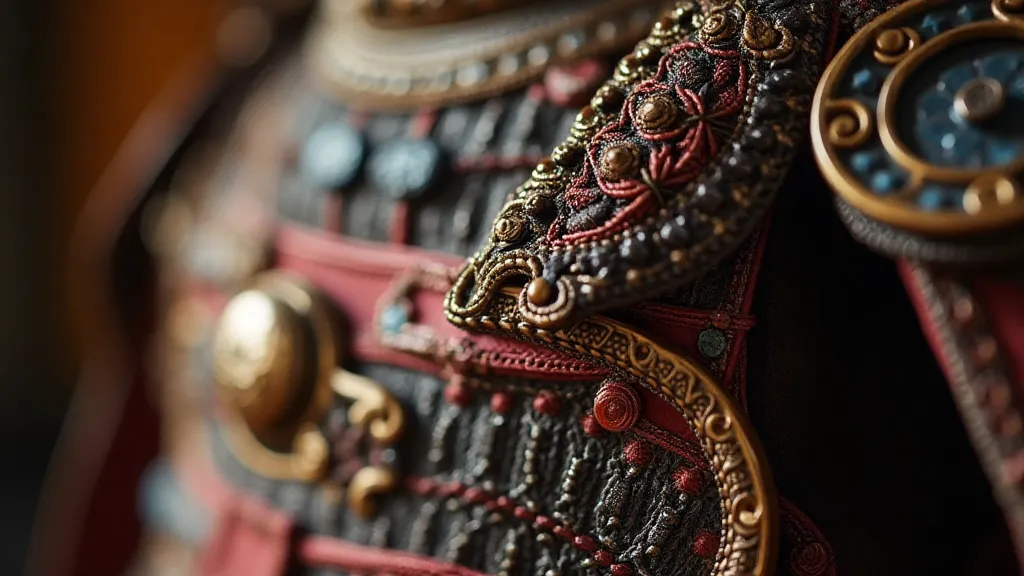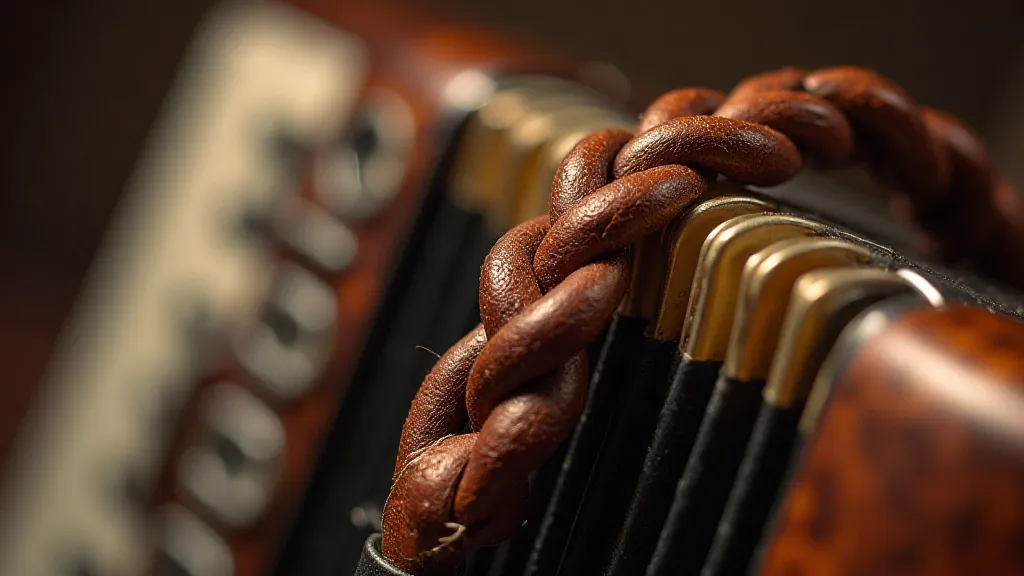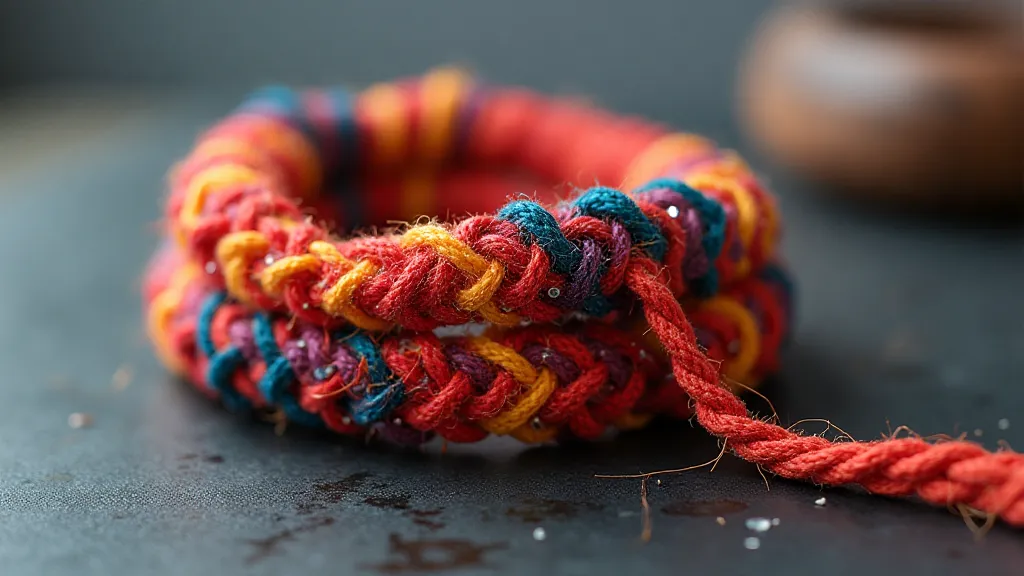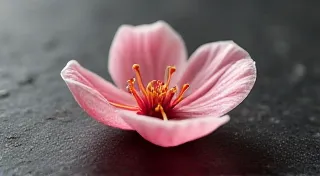Beyond Adornment: The Functional Heart of Kumihimo
The scent of aged wood and subtle beeswax always takes me back. It's the smell of my grandfather’s workshop, a dimly lit sanctuary filled with the ghosts of meticulous work. He collected antique accordions, each one a testament to the enduring power of human ingenuity. What struck me most wasn’t just the music they produced, but the intricate leather straps – often meticulously braided – holding them together. Those straps, I later learned, were a distant echo of Kumihimo, a traditional Japanese braiding technique with a history far deeper and more functional than I could have imagined.
Kumihimo, meaning “gathered threads,” isn't merely decorative; it’s a living thread woven through the very fabric of Japanese history. While we often see Kumihimo in modern applications – adorning jewelry or embellishing clothing – its roots lie firmly planted in necessity, a testament to the resourcefulness and ingenuity of the Japanese people.
From Armor to Accordions: A Functional Heritage
Imagine a battlefield in feudal Japan. The clang of steel, the shouts of warriors, and the vital necessity of secure equipment. Kumihimo was indispensable. From the 12th century onwards, strong, durable Kumihimo cords were used to lace samurai armor (yoroi). These weren't simple knots; they were expertly braided using techniques that ensured tensile strength and flexibility, crucial for allowing movement while maintaining protective coverage. The braiding was often done with silk, but hemp and cotton were also common, depending on the warrior's status and the armor’s purpose. The strength and reliability of these cords quite literally meant the difference between life and death.

The significance extended beyond the battlefield. The Shogunate employed dedicated Kumihimo artisans – known as kumihito – who were highly skilled and revered for their craft. These artisans weren't just braiding cords; they were creating essential components for various aspects of Japanese life. Sword hilts were wrapped in Kumihimo, providing a secure grip and adding a touch of elegance. Buddhist scriptures were bound with meticulously crafted Kumihimo, signifying reverence and longevity. Even the intricate bindings of fans and the straps of ceremonial bows relied on the strength and beauty of Kumihimo.
My grandfather, a quiet man of few words, always emphasized the enduring nature of craftsmanship. He’s taught me that true value isn't just about the finished product, but the process, the skill, the generations of knowledge passed down. He once showed me an old accordion, its leather straps cracked and worn, yet still functional. "See?" he's said, his voice soft. "Even something seemingly small, like this strap, carries a history. It connects you to the hands that made it, to the purpose it served." That accordion, with its worn Kumihimo strap, felt like a tangible link to the past, a miniature echo of the Samurai’s armor.
The Evolution of Techniques and Materials
Early Kumihimo techniques were remarkably simple, often involving just a few sticks to create basic round and flat braids. However, over time, more sophisticated tools and techniques emerged. The Marudai, a square wooden frame, allowed for the creation of more complex and symmetrical braids, including the iconic koshi-himo, a flat braid frequently used for sword cords and obi sashes. The Takadai, a large, tiered frame, enabled the creation of incredibly wide and intricate braids, often used for ceremonial purposes.
The materials used in Kumihimo have also evolved. While silk was traditionally the most prized material, its expense often restricted its use to the elite. Hemp, cotton, and linen provided affordable alternatives for everyday applications. The rise of synthetic fibers in the 20th century introduced new possibilities, allowing for a wider range of colors and textures. However, a renewed appreciation for traditional materials has led to a resurgence in the use of natural fibers like silk and hemp.
Restoration and Collecting: A Glimpse into the Past
For those with an interest in history and craftsmanship, collecting antique items incorporating Kumihimo can be a rewarding pursuit. Antique accordions, for example, with their original Kumihimo straps, offer a tangible connection to a bygone era. Similarly, fragments of yoroi, featuring remnants of the original Kumihimo lacing, offer a glimpse into the world of the Samurai. Condition and originality significantly impact the value of these items, with intact, authentic Kumihimo lacing commanding a premium.

Restoring these items requires a delicate touch and a respect for their history. Replacing a damaged Kumihimo strap requires not only replicating the original braiding technique but also selecting appropriate materials that match the age and character of the original. While modern techniques can be used, understanding the historical methods is crucial for maintaining authenticity. Many restorers use period-appropriate materials and traditional braiding patterns to ensure that the restoration honors the item’s heritage.
Even a simple replacement strap can tell a story. My grandfather would say that the new strap isn’t meant to erase the old one, but rather to serve as a reminder of the object’s resilience and its journey through time. It’s about honoring the past while ensuring the object’s continued existence.
A Thread Through Time
Kumihimo braiding, far from being a mere decorative craft, is a living testament to the ingenuity and resourcefulness of the Japanese people. It is a thread woven through the fabric of their history, connecting us to the warriors, artisans, and spiritual leaders who shaped their culture. From the functional lacing of samurai armor to the delicate bindings of sacred texts, Kumihimo embodies a profound respect for craftsmanship and a deep appreciation for the enduring power of tradition. And like the scent of aged wood and beeswax in my grandfather's workshop, it evokes a feeling of timeless connection—a reminder that even the smallest of things can hold a world of history within them.






